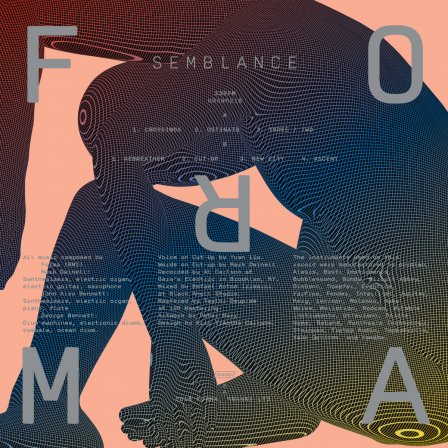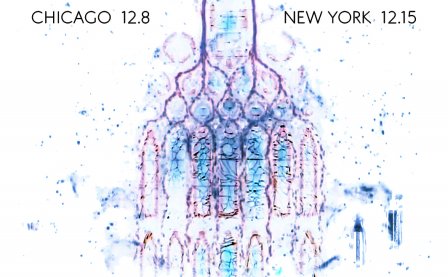Semblance can mean resemblance: “Semblance bears some semblance to the recent crop of 80s synth revivalists.” In Merriam-Webster, this is definition #4, “actual or apparent resemblance.” Oddly, semblance can also mean the opposite, something closer to dissembling: “There is only a semblance between Semblance and those neon-obsessed throwbacks.” This is the more common meaning, #1a, “outward and often specious appearance or show.” So, what kind of semblance does Semblance perform? Does Forma really resemble the trendy retrofuturists, or is this a specious comparison, a mere appearance?
The difference between Forma’s reappropriation of synth culture and that of acts like S U R V I V E, Com Truise, and VHS Dreams is that they studiously avoid the aesthetic signifiers that mark the latter projects as nostalgic nods to 80s pop culture. Instead, Forma align themselves with the more serious experimental music of the previous decade: Cluster, Neu!, Tangerine Dream, Brian Eno. For instance, band members George and John Also Bennett cite their recent roles in Jon Gibson’s ensemble performing his 1973 ambient piece “Visitations” as a key influence on Semblance. However, they’re not content to recreate 1970s minimalist experiments; they also aver that their goal is to “broaden the idea of what an electronic music ensemble can sound like.” The question, then, is how far they can step outside of the quotation marks that currently come attached to their chosen Rolands and Mellotrons.
Semblance hearkens back to the album format that dominated the 1970s as well. Its seven songs seem to have been written and sequenced specifically for vinyl. Side A builds gradually from the delayed crescendo of “Crossings” to the repeating patterns of the self-descriptive “Ostinato” to end with the eight-plus minute groove of “Three-Two.” Then we get the palette-cleansing “Rebreather,” a relatively short flute meditation, before launching properly into Side B. “Cut-Up” features Yuan Liu reading a text by band member Mark Dwinell, her voice chopped and distorted underneath a motorik beat and a wandering synth line. The nearly 10-minute long “New City,” the album’s standout track, is built around a beautiful piano part that supports ambient electronics and a pulsing polyrhythm. “Ascent” then finishes the album with synths that, appropriately, ascend, until the listener is guided up and out like Charlie in his glass elevator.
If Forma is capable of broadening the idea of what an electronic music ensemble can sound like — an ambitious goal for anyone — they come closest to doing so in those moments of epiphany that come after improvising for a relatively long time. As such, the album’s most successful tracks (and not coincidentally, its two singles) are its longest, “Three-Two” and “New City.” The logic that brings you to the driving climax of “Three-Two” or the blissful denouement of “New City” is impossible to recall exactly, leading you to press repeat for another attempt at following the band’s mazy pathways. Forma never push this aspect of their sound as far as their krautrock forebears, giving this perhaps only a semblance to the greatest albums of Cluster or Neu!. Forma is still more than a nostalgia act, though, as Semblance’s rigorous and inventive improvisations attempt to bring synth music up to date, despite the unavoidable cultural allusions that threaten to render it an ironic pastiche.
More about: FORMA




